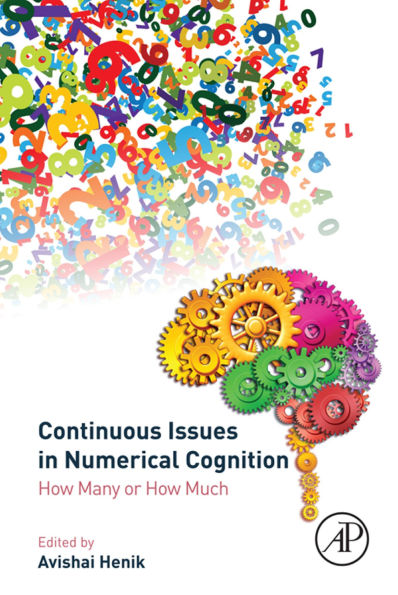Continuous Issues in Numerical Cognition: How Many or How Much
Continuous Issues in Numerical Cognition: How Many or How Much re-examines the widely accepted view that there exists a core numerical system within human beings and an innate ability to perceive and count discrete quantities. This core knowledge involves the brain's intraparietal sulcus, and a deficiency in this region has traditionally been thought to be the basis for arithmetic disability. However, new research findings suggest this wide agreement needs to be examined carefully and that perception of sizes and other non-countable amounts may be the true precursors of numerical ability. This cutting-edge book examines the possibility that perception and evaluation of non-countable dimensions may be involved in the development of numerical cognition. Discussions of the above and related issues are important for the achievement of a comprehensive understanding of numerical cognition, its brain basis, development, breakdown in brain-injured individuals, and failures to master mathematical skills. - Serves as an innovative reference on the emerging field of numerical cognition and the branches that converge on this diverse topic - Features chapters from leading researchers in the field - Includes an overview of the multiple disciplines that comprise numerical cognition and discusses the measures that can be used in analysis - Introduces novel ideas that connect non-countable continuous variables to numerical cognition
1132569623
Continuous Issues in Numerical Cognition: How Many or How Much
Continuous Issues in Numerical Cognition: How Many or How Much re-examines the widely accepted view that there exists a core numerical system within human beings and an innate ability to perceive and count discrete quantities. This core knowledge involves the brain's intraparietal sulcus, and a deficiency in this region has traditionally been thought to be the basis for arithmetic disability. However, new research findings suggest this wide agreement needs to be examined carefully and that perception of sizes and other non-countable amounts may be the true precursors of numerical ability. This cutting-edge book examines the possibility that perception and evaluation of non-countable dimensions may be involved in the development of numerical cognition. Discussions of the above and related issues are important for the achievement of a comprehensive understanding of numerical cognition, its brain basis, development, breakdown in brain-injured individuals, and failures to master mathematical skills. - Serves as an innovative reference on the emerging field of numerical cognition and the branches that converge on this diverse topic - Features chapters from leading researchers in the field - Includes an overview of the multiple disciplines that comprise numerical cognition and discusses the measures that can be used in analysis - Introduces novel ideas that connect non-countable continuous variables to numerical cognition
125.0
In Stock
5
1

Continuous Issues in Numerical Cognition: How Many or How Much
456
Continuous Issues in Numerical Cognition: How Many or How Much
456
125.0
In Stock

Product Details
| ISBN-13: | 9780128017937 |
|---|---|
| Publisher: | Elsevier Science & Technology Books |
| Publication date: | 05/18/2016 |
| Sold by: | Barnes & Noble |
| Format: | eBook |
| Pages: | 456 |
| File size: | 12 MB |
| Note: | This product may take a few minutes to download. |
About the Author
What People are Saying About This
From the B&N Reads Blog
